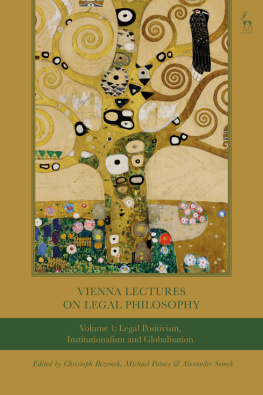Routledge Library Editions
THE APA TANIS AND THEIR NEIGHBOURS
ANTHROPOLOGY AND ETHNOGRAPHY
Routledge Library Editions
Anthropology and Ethnography
SOUTH ASIA
In 4 Volumes
I | Land and Social Change in East Nepal | Caplan |
II | The Apa Tanis and their Neighbours | von Frer-Haimendorf |
III | Western India in the Nineteenth Century | Kumar |
IV | Caste and Kinship in Kangra | Parry |
THE APA TANIS AND THEIR NEIGHBOURS
A Primitive Civilization of the Eastern Himalayas
CHRISTOPH VON
FRER-HAIMENDORF
First published in 1962
Reprinted in 2004 by
Routledge
2 Park Square, Milton Park, Abingdon, Oxon, OX14 4RN
Transferred to Digital Printing 2009
Routledge is an imprint of the Taylor & Francis Group
1962 Christoph von Frer-Haimendorf
All rights reserved. No part of this book may be reprinted or reproduced or utilized in any form or by any electronic, mechanical, or other means, now known or hereafter invented, including photocopying and recording, or in any information storage or retrieval system, without permission in writing from the publishers.
The publishers have made every effort to contact authors/copyright holders of the works reprinted in Routledge Library Editions Anthropology and Ethnography. This has not been possible in every case, however, and we would welcome correspondence from those individuals/companies we have been unable to trace.
These reprints are taken from original copies of each book. In many cases the condition of these originals is not perfect. The publisher has gone to great lengths to ensure the quality of these reprints, but wishes to point out that certain characteristics of the original copies will, of necessity, be apparent in reprints thereof.
British Library Cataloguing in Publication Data
A CIP catalogue record for this book is available from the British Library
The Apa Tanis and their Neighbours
ISBN 0-415-32556-0 (set)
ISBN 0-415-33047-5
Miniset: South Asia
Series: Routledge Library Editions Anthropology and Ethnography
THE APA TANIS AND THEIR NEIGHBOURS
A Primitive Civilization of the Eastern Himalayas
by
CHRISTOPH VON
FRER-HAIMENDORF
Professor of Asian Anthropology in the University of London
LONDON
ROUTLEDGE & KEGAN PAUL
NEW YORK: THE FREE PRESS OF GLENCOE
First published in 1962
in Great Britain
by Routledge & Kegan Paul Ltd
Broadway House, 6874 Carter Lane
London, E.C.4
and in the United States of America
by The Free Press of Glencoe
A Division of The Macmillan Company
The Crowell-Collier Publishing Company
60 Fifth Avenue, New York 11
Christoph von Frer-Haimendorf 1962
No part of this book may be reproduced in any form without permission from the publisher, except for the quotation of brief passages in criticism
Printed in Great Britain by Western Printing Services Limited Bristol
To
Robert von Heine-Geldern
T HE tangle of wooded hill-ranges which enclose, horse-shoe like, the fertile plains of Assam is the home of tribal populations distinct in language, race and culture from the Hindu and Muslim peasantry of the Brahmaputra valley. The Nagas of the mountainous country extending between Assam and Burma, the Mishmis of the Lohit valley, and the Abors of the hills to both sides of the Dihang River are all tribes that until recently had remained untouched by the historic civilizations dominating the cultural pattern of the rest of Assam. Unaffected by Hinduism and Islam no less than by the Buddhism of the neighbouring areas of Burma and Tibet, they persisted in archaic forms of economy, social organization, ritual and belief, and in the seclusion of hill-regions, separated one from the other by formidable natural barriers, they developed a great number of variations on a common cultural theme.
The wealth of social and cultural configurations found among the hill-tribes in the borderlands of Assam has not escaped the attention of anthropologists and ethnographic-ally interested administrators. At a time when the anthropological studies of aboriginal tribes of Peninsular India could be counted on the fingers of one hand, a series of monographs published under the auspices of the Government of Assam provided full and accurate information on several of the Naga tribes, the Lushei-Kuki tribes, the Garos, Khasis, Kacharis, Meitheis and Mikirs. Yet, there remained one area about whose inhabitants very little was known and even less available in print. This area, situated between the northern fringe of the Assam plains and the crest-line of the Great Himalayan Range, which forms traditionally the border between India and Tibet, remained outside the administrative control of the Government of Assam, and its inhabitants continued in their traditional style of life unobserved and unchecked by outsiders. From the border of Bhutan to the west as far as the Abor Hills to the east, there extended until 1944 tribal country unknown to the Assamese of the plains no less than to the Tibetans beyond the Himalayan passes; country inhabited by a number of distinct tribes of which barely the names were known to the outside world. Politically this country was included in the Balipara Frontier Tract of Assam, but only the southernmost regions were ever entered by government officials, and the greater part of the area remained unmapped and unexplored.
The first determined effort to survey the area south-west of the Subansiri River and particularly the valleys of the Kamla and Khru Rivers was made in 1911 and 1912 by a semi-military expedition known as the Miri Mission. The published Survey of India maps of the area now constituting the Subansiri Division of the North-East Frontier Agency are still based on the survey operations undertaken by the Miri Mission, the results of more recent surveys being not yet available in print.
From 1912 until 1944 no exploratory expedition entered the Subansiri region, but as part of an extensive programme for the exploration and development of the North-East Frontier regions the Government of India resumed in 1944 the plans suspended in 1912. It was then that an appointment as Special Officer Subansiri gave me the unique opportunity of touring the hill-country south-west of the Subansiri River and of getting to know populations which had little or no contact with the plains of Assam. Many of the villages which I visited in 1944 and 1945 had never been entered by any outsiderneither European, nor Indian, nor Tibetanand the conditions of life which I observed represented the traditional pattern undisturbed by the effects of an administration centred outside the tribal territory. The circumstances of my work in the Subansiri region, which was only partly anthropological, have been described in my book












